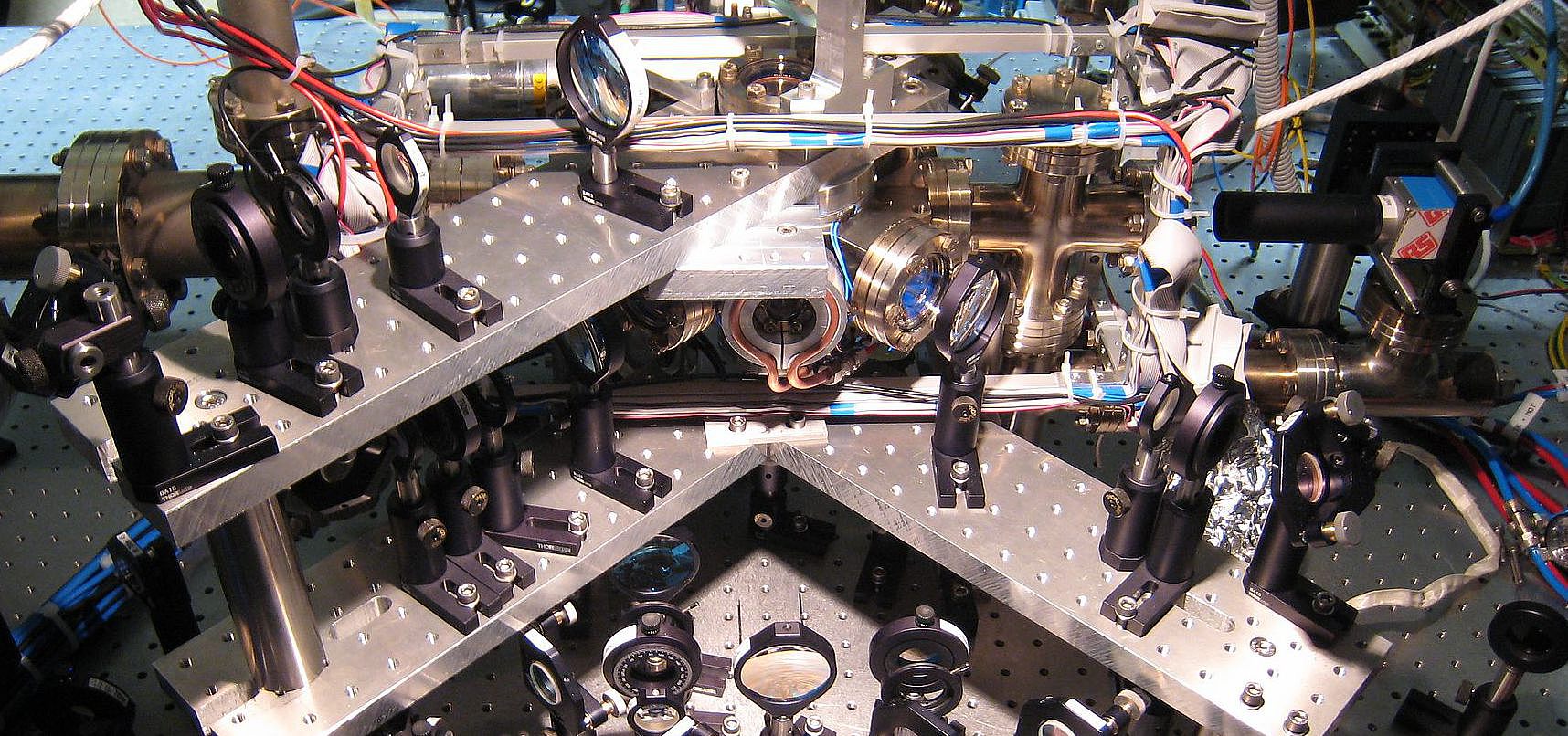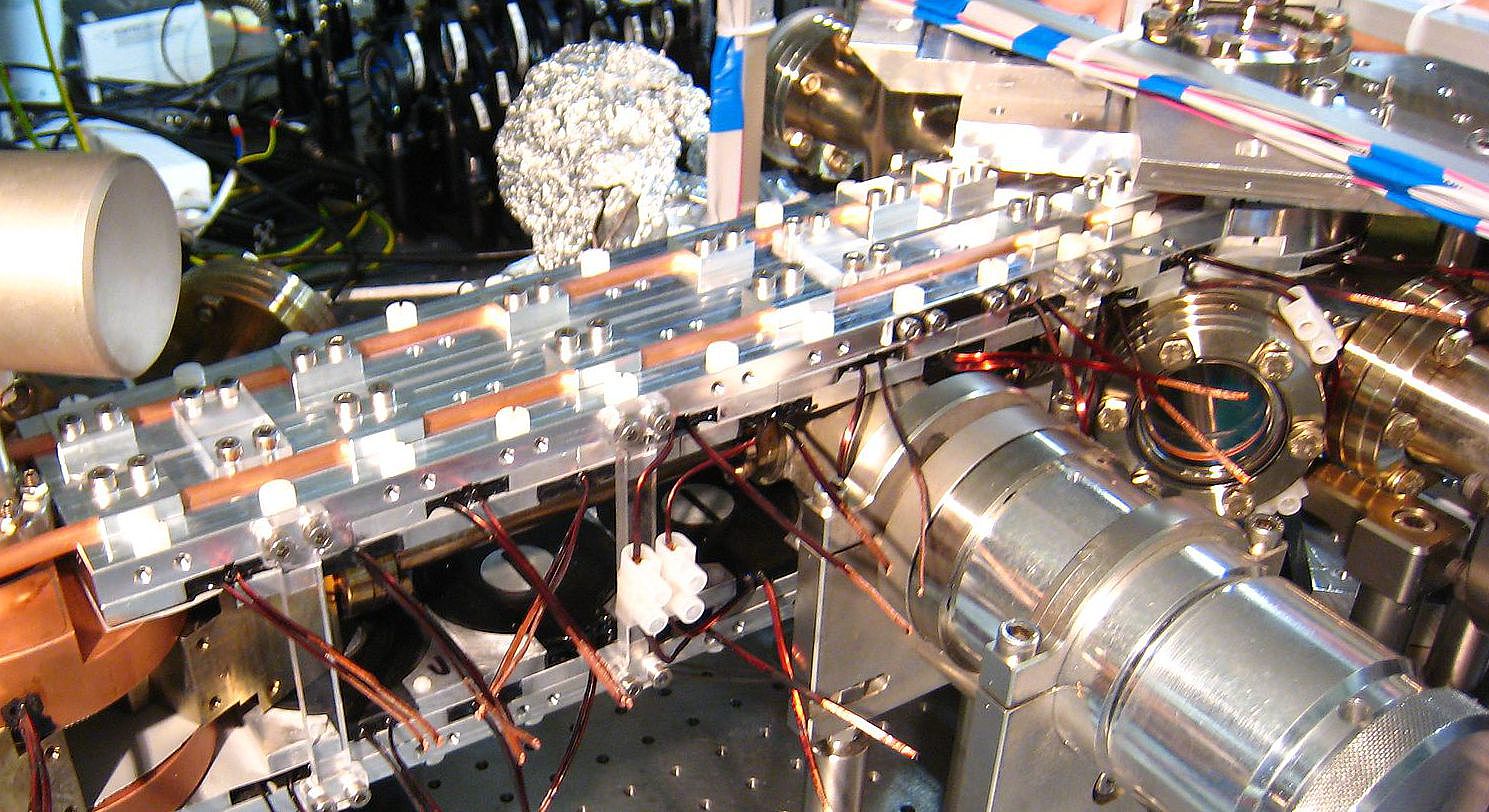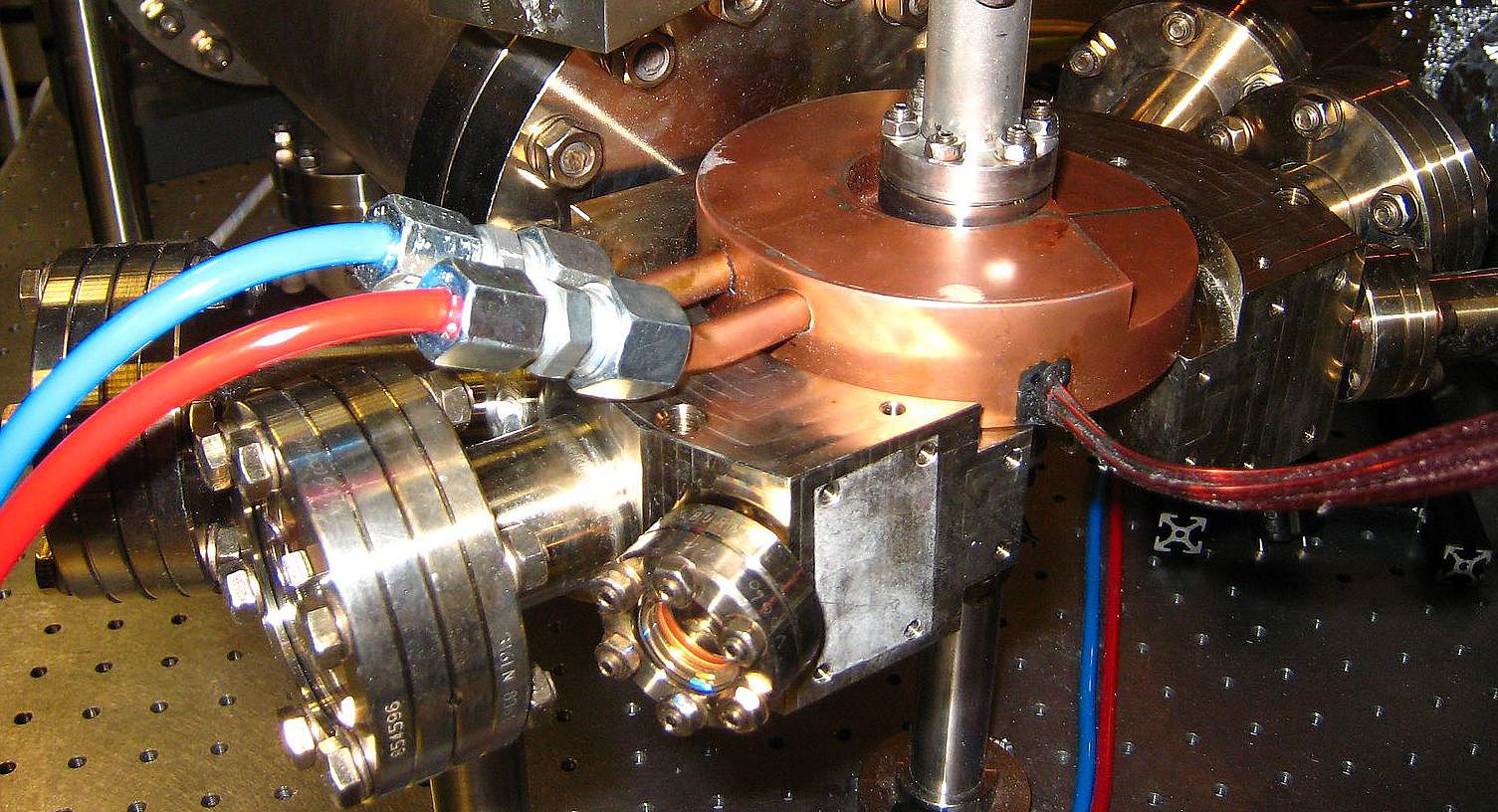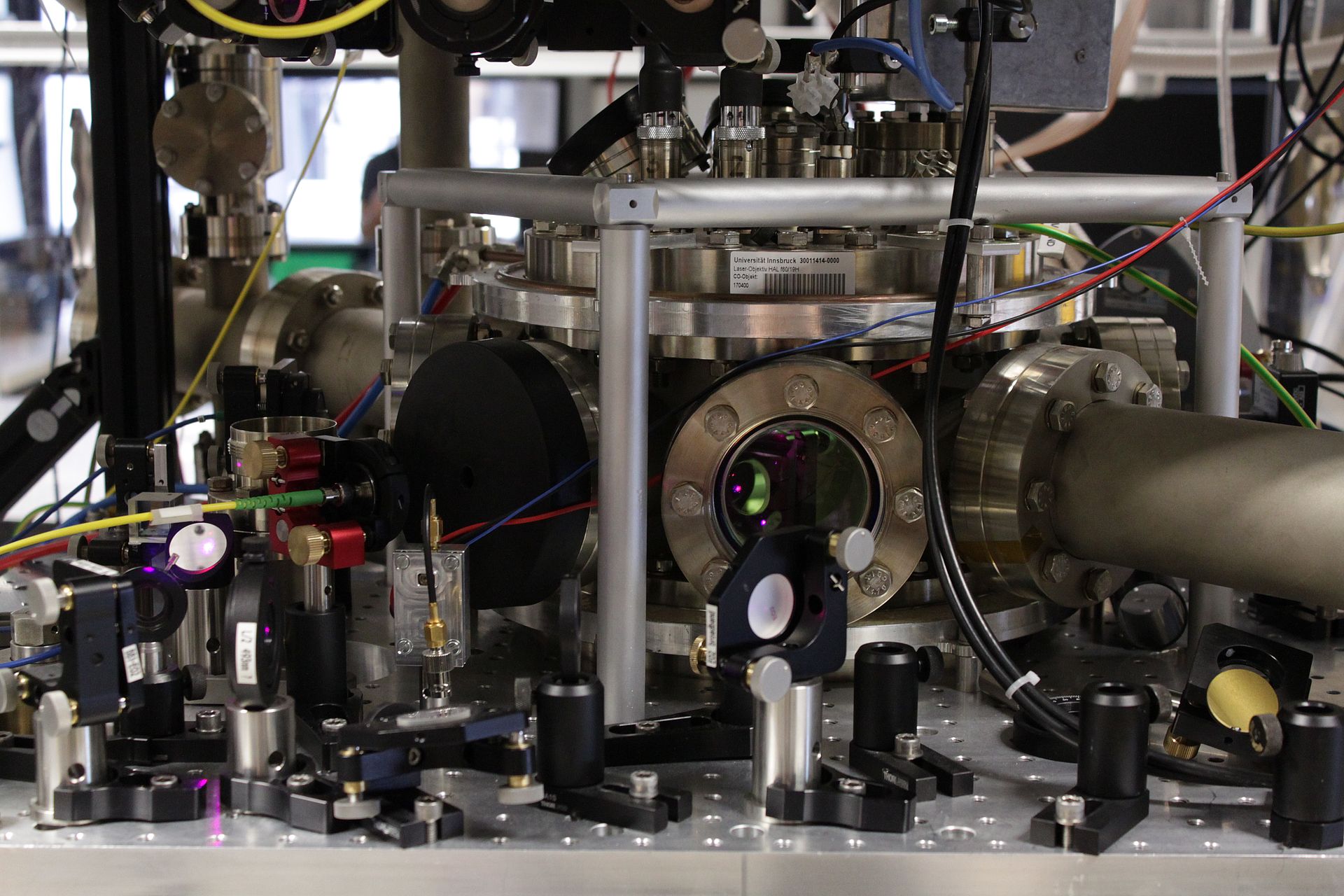Overview BaRbIE setup
The experimental setup can be divided into five different sections.
- Magneto-optical trap (MOT)
- Magnetic transport stage
- Bose-Einstein-Condensate (BEC) chamber
- Optical transport stage
- Science chamber with hybrid trap
The central idea of our hybrid apparatus is the spatial separation of the BEC apparatus, where the ultracold atoms (or a BEC) are produced, from the ion-trapping region, where the atom-ion collision experiments are performed.

MOT chamber
In the beginning of the experimental sequence, we load Rb 87/85 atoms from the surrounding background gas into a magneto-optical trap. This sequence typically takes a few seconds and the atoms are subsequently further cooled down using optical molasses. After this step, the atoms are transported with a magnetic transport stage to the BEC chamber.


Magnetic transport
The magnetic transport stage consists of 13 different coils. For the transport itself, each coil is switched on in a sequential fashion to provide a moving trapping potential for the atoms. The whole magnetic transport takes about 1.5 seconds. On the left you can see a picture of the transport stage when it was build up. It connects our MOT chamber and our BEC chamber on the lower level of the apparatus.
BEC chamber
The BEC chamber itself is made of stainless steel. It has several viewports for optical access and is connected to the MOT chamber and the science chamber. After the magnetic transport, the atoms are loaded into a magnetic trap. There it is possible to cool down the atoms even further via radio-frequency evaporation cooling before we load them into an optical dipole trap. For the optical transport, two strong counterpropagating laser beams in vertical direction are turned on forming an 1D optical lattice while the dipole trap is ramped down. The typical duration for the transport is about 300ms for a distance of 30cm.

Science chamber
The science chamber is the heart of the machine. Here we combine a linear Paul trap with a crossed optical dipole trap. This enables us to study various interesting phenomena such as ultracold atom-ion collisions or ultracold chemistry. The ionic species we work with is Barium-138 whereas the neutral atoms can be either Rb85 or Rb87.
Trapped barium ions in our Paul trap
Here we demonstrate you a string of Barium-138 ions trapped in our linear Paul trap. We make them optically visible by fluorescence imaging. The ion string itself is oriented along the weakly confined axis of our trap. Due to the interplay between trapping forces and repulsive Coulomb forces, the typical distance between ions in our system is 10µm. Sometimes you see that ions change their positions and previously occupied spots become dark. At these positions there are still trapped ions (dark ions) but we cannot make them visible with the current laser settings. Most probably it is a different isotope of Barium.


